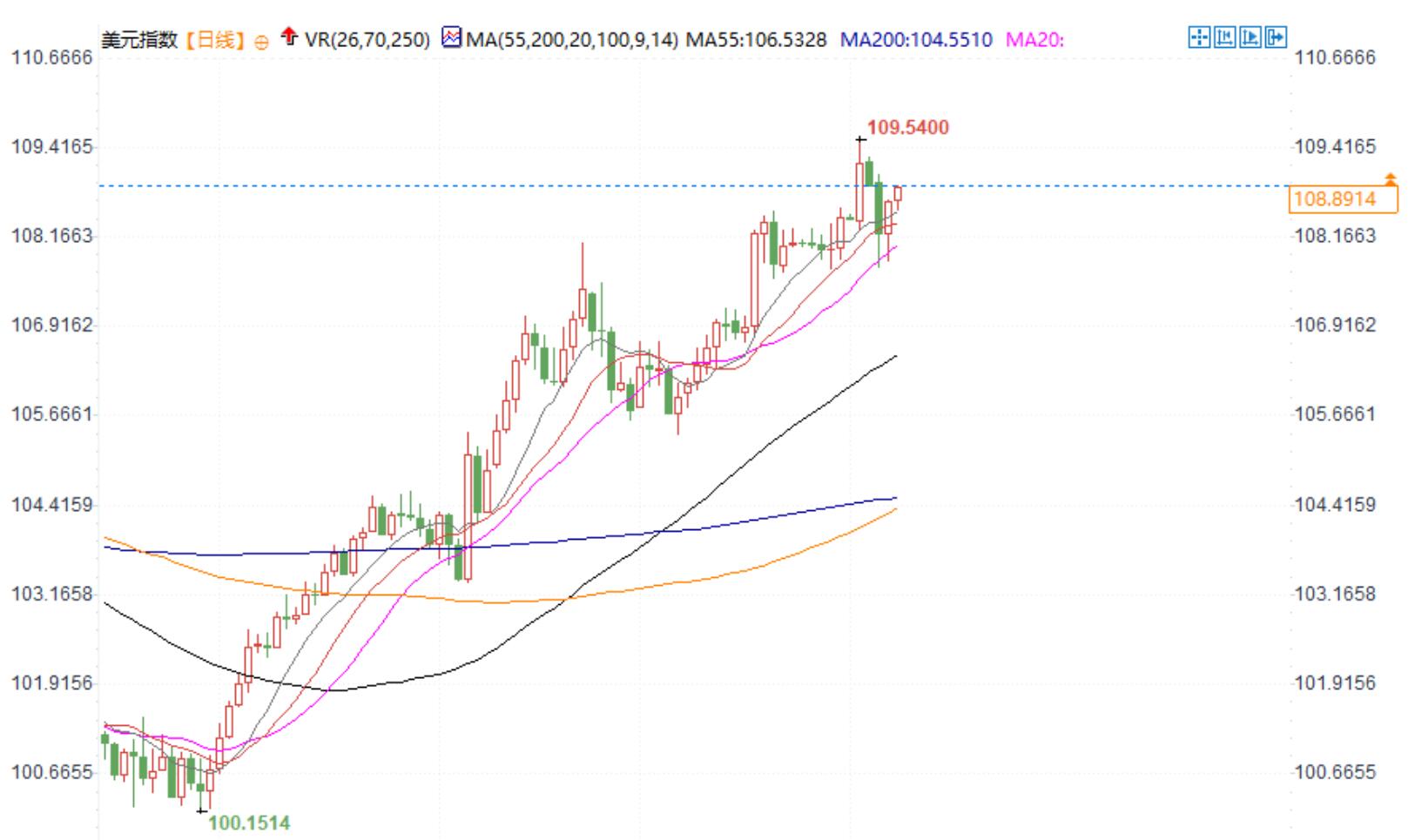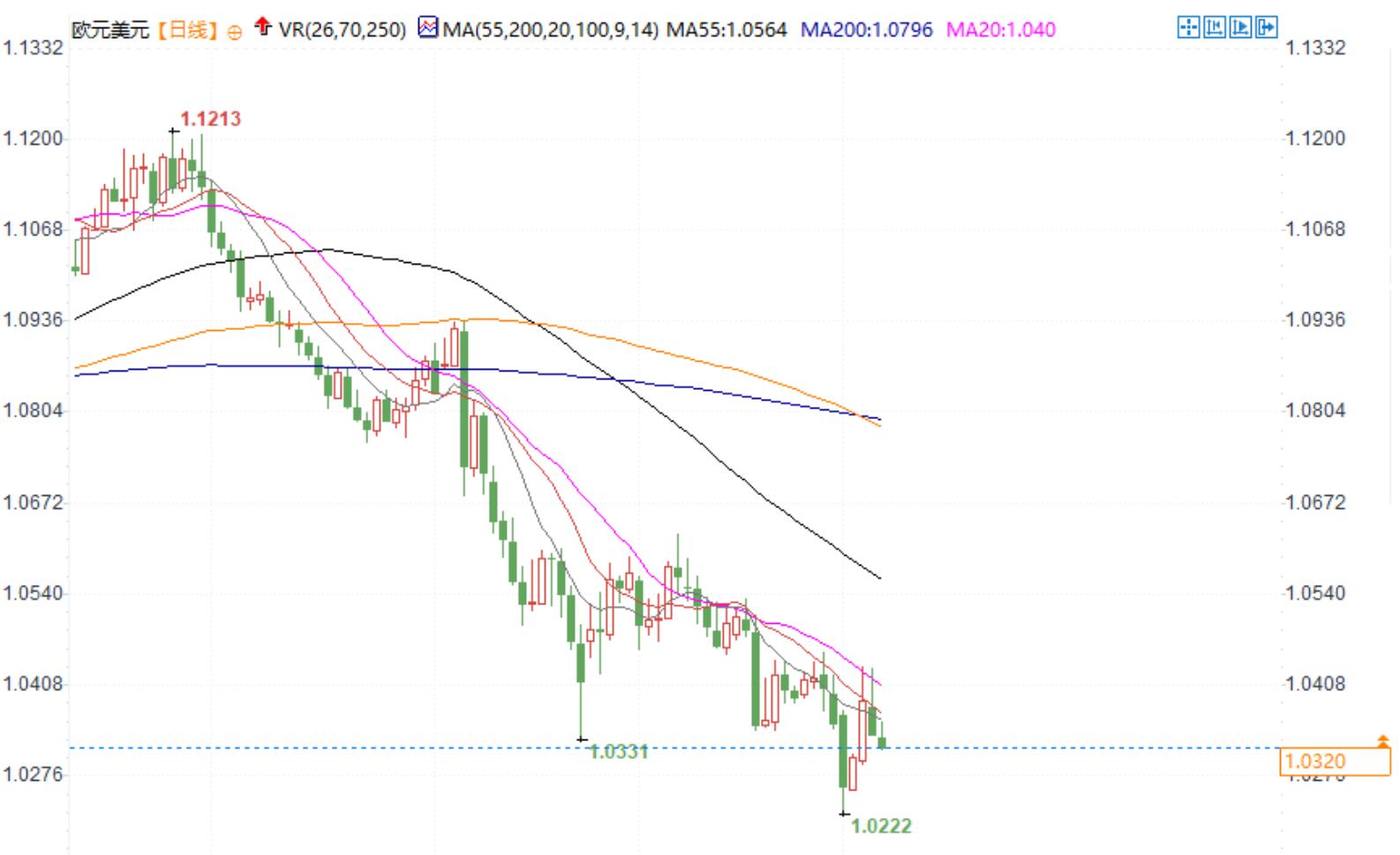Is it difficult to change the strength of the US dollar? Focus on non farm and euro breakout risks
The strong return of the US dollar due to the soaring ISM service industry price index and inflation concerns may lead to the Federal Reserve delaying interest rate cuts, exacerbating market expectations; Europe is facing energy crisis and stagflation risks, and the euro is weak. The US dollar index is expected to break through 110, and the EUR/USD is expected to fluctuate downwards. Short term attention should be paid to non farm employment data and Federal Reserve meeting minutes.
Fundamental analysis
1. The US dollar returns to focus: inflation concerns help
Recently, the US economic data has shown impressive performance, especially the soaring ISM service sector price payment sub index in December, which has sparked market concerns about the resurgence of inflation. This data may refocus the Federal Reserve on inflation issues and further consolidate its hawkish stance. Against this background, the US dollar returned strongly. At the same time, the yield of US treasury bond bonds rose, further boosting the US dollar.
The upcoming economic data release, especially the non farm payroll report (NFP) to be released this Friday, will be the focus of market attention. Prior to this, FOMC meeting minutes, ADP employment data, and speeches by Federal Reserve Governor Chris Waller could all have a significant impact on the market. Waller's speeches have always had a significant impact on discussions of interest rate policy, so the market is closely monitoring the Federal Reserve's policy signals that may be revealed in his remarks to predict the Fed's next move.
Although the market generally expects the Federal Reserve to remain cautious, the latest economic data has exceeded expectations, indicating that the resilience of the US economy may prompt the Federal Reserve to adopt a more conservative attitude in policy decision-making. Meanwhile, the policy uncertainty of the new US government has further increased market anxiety. Especially against the backdrop of rising inflation concerns, the Federal Reserve may continue to delay the timing of interest rate cuts.
2. The complex impact of tariff issues
Tariff policy remains one of the core issues of concern for foreign exchange traders. Amid the potential implementation of heavy tariffs by the Trump administration, the market experienced fluctuations at one point. Although the discussion on tariff issues has temporarily taken a back seat, its potential impact still exists. Recently, a report by The Washington Post has raised concerns in the market about the possibility of the United States imposing tariffs on specific products. Although this report was later denied by Trump, its brief impact is enough to illustrate the market's sensitivity to tariff policies. If the US tariff policy eventually becomes more moderate, it may reverse some of the dollar's upward trend and have a significant impact on the overall market landscape.
3. Inflation and Energy Crisis in Europe
On the European side, although inflation data has increased, the market's response to it has been lukewarm, and it is generally believed that this is mainly due to the base effect being fully considered by the model. The current interest rate market predicts that the European Central Bank will cut interest rates by 25 basis points four times this year, reflecting the fact that the market generally ignores the rising inflation in Europe.
However, the rise in energy prices has become an unavoidable issue in the European market. As winter deepens, the energy supply crisis becomes increasingly severe. The closure of the Russian natural gas pipeline due to the expiration of the Ukraine transit agreement has led many European countries to turn to liquefied natural gas (LNG) imports. Natural gas prices have soared to their highest point since autumn 2023, with a year-on-year increase of 105%. This trend not only exacerbates inflationary pressures in the eurozone, but also escalates market concerns about stagflation risks. The soaring energy prices will further push up the economic costs of the eurozone, posing significant challenges to monetary policy and economic growth prospects.
Technical analyst interpretation:
1. Technical analysis of the US dollar
The US dollar index has performed strongly recently, benefiting from the support of economic data and the boost of hawkish expectations from the Federal Reserve. The unexpected rise in the ISM service industry price payment index has reignited market concerns about inflation, driving the US dollar higher. The current strength of the US dollar mainly relies on fundamental support. If the upcoming non farm payroll data meets expectations, the US dollar may further strengthen and even break through the 110 mark.
However, the short-term trend of the US dollar may also be significantly influenced by market sentiment. If the market's optimistic expectations for the US economy change, such as unexpected lower than expected non farm payroll data or other economic indicators showing weakness, the US dollar may face some adjustment pressure.

2. Technical analysis of EUR/USD
The current technical situation of EUR/USD is showing a weak pattern. Despite the lackluster response of the market to rising inflation in Europe, concerns about soaring energy prices and stagflation risks remain significant pressure factors that cannot be ignored in the market. In addition, the market generally expects the European Central Bank to adopt a rate cut policy this year, which further weakens the attractiveness of the euro.
From a technical perspective, the euro/dollar is still in a fluctuating downward trend. Although there may be a technical rebound in the short term, the overall trend is bearish, especially against the backdrop of a strong US dollar. The current exchange rate is approaching key support levels, and if it falls below these levels, it may further open up downward space and test parity levels close to 1.0000.

Summary and Prospect
Overall, the strength of the US dollar still relies on the support of US economic data and the rising expectations of hawkish policies from the Federal Reserve. The release of important data in the coming days, including the non farm payroll report and the minutes of the Federal Reserve meeting, will be a key factor in determining the trend of the US dollar. At the same time, the energy crisis and stagflation risks facing Europe still loom over the market, making it difficult for the euro to escape weakness.
Technically speaking, the EUR/USD may maintain a volatile downward trend in the short term, and the gains or losses of key support levels will determine the subsequent trend. Overall, the strong pattern of the US dollar is difficult to reverse in the short term.
Tips:This page came from Internet, which is not standing for FXCUE opinions of this website.
Statement:Contact us if the content violates the law or your rights
